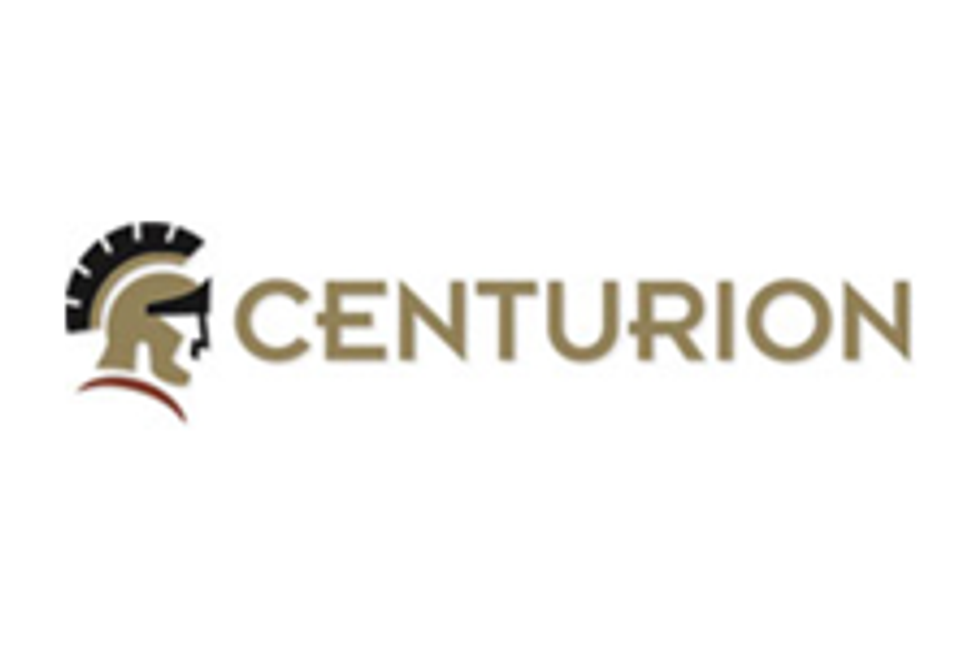
President, CEO and Director Corrado De Gasperis discusses Comstock’s recent Q3 results and what’s next for the company.
CEO Interviews are paid content requested by clients advertising on Resource Investing News. Client news is contextualized by CEOs and the interview is disseminated to the Resource Investing News audience, because it has value to market watchers.
We interview a CEO who has prepared coverage of the company and interview them for an understanding of their perspective on the company, the investment potential of the company, and market news related to the company.
The information contained here is for information purposes only and is not to be construed as an offer or solicitation for the sale or purchase of securities.

Comstock Mining (NYSEMKT:LODE) holds a large, consolidated position in Nevada’s Comstock district, and began producing gold and silver at the Lucerne resource area in 2012. Since then, it’s made continuous operational improvements in order to maintain profitability in today’s tough markets.
Most recently, the company released its results for the third quarter of 2015. To get more insight on those results and to learn about what’s in store for Comstock moving forward, the Investing News Network sat down with President, CEO and Director Corrado De Gasperis. Here’s what he had to say.
INN: Let’s start by talking about your Q3 results. Can you break down the financial highlights for me?
CDG: I think our most salient financial highlight is that year-to-date we have driven down costs and delivered a very robust gross margin, meaning that we’ve been profitable from operations despite lower gold prices. In the third quarter we delivered a cash cost of mining of $584 per ounce, down from $615 last quarter. We’re very focused on delivering these low costs, and our margins are strong despite a tough gold environment.
Last year we committed to saving $10 million compared to 2013, and we exceeded that — we ended up saving over $11.5 million year-on-year. We’ve been on a similar mission this year to deliver the most streamlined system and the lowest and most flexible costs. This is based on saving another $10 million, and we’re on track for that. Through the third quarter we’ve delivered $6.7 million in savings.
INN: Your first gold pour was in 2012, when the gold price had already started to fall, so I imagine your costs were already fairly low. How have you managed to make further reductions?
CDG: I would say there are a few major things. First, we focused on our mine plan to ensure that we had the strongest geological control and the most predictable plan. When we started to get more and more predictable results, we didn’t need to buffer or protect the system as much — we didn’t need to schedule extra time for hauling or extra time for crushing. The variation in those areas dropped dramatically.
Second, those mine plan improvements resulted in a tremendous reduction in our strip ratio, meaning less waste and more precise mining of ore. We coupled a better mine plan with stronger grade controls. Third, we did a significant amount of consolidation. We consolidated our metallurgical laboratory and our metallurgical process facility, so that resulted in a smaller, more flexible workforce. We also consolidated hauling and crushing activities, essentially from three functional departments into one flexible group. We really saw significant improvements in terms of cost reductions, including reduction of labor and fuel. And now we’re starting to evaluate optimizing our equipment.
Overall, the activities were very specific. We tried to start with the most fundamental, like mine planning and making sure we had the best possible plan, and then we translated that into better scheduling and execution of that plan. It all worked. We got better grades, lower waste and much more predictable and stable operations. It’s all come together in our third full year of mining.
INN: Comstock’s production was a little lower this past quarter, but overall have you seen steady output throughout all these changes?
CDG: Yes, all of our savings to date have been through consistent or slightly higher production. In other words, we produced more in 2014 than we produced in 2013, and we’ve essentially been at a run rate of 20,000 gold equivalent ounces or higher since the first year of production.
Our one disappointment has been our inability to ramp up production from our first phase of Lucerne mining to the originally targeted higher levels. We had a plan to increase our production — increase our ounces and increase our revenue by a factor of two, up to 40,000 ounces. However, our mine plan had some weaker assumptions that impacted our ability to ramp up and our performance. We acknowledged that, assessed it and addressed it head on with much more thorough geological data integration into our mine plan — those assumptions required a higher level of diligence, validation and control. Once we validated (or invalidated) the assumptions, we were able to face reality, and it showed us the path to the higher-grade, longer-term mining operation that we’ve implemented, increasing predictability, reducing costs and providing the higher-grade transition we are developing now.
INN: Can you explain how operations have changed with the new mine plan?
CDG: The new plan provided predictability such that our staffing levels streamlined dramatically. We previously overstaffed to handle variation in daily ore flow, resulting in more miners, more crushing staff and heavier management oversight. We also saw an improvement in grade control, and consequently grade, and lower strip ratios. This all resulted in dramatic cost reductions. We also extrapolated this enhanced geological integration to our exploration and development targets.
What we hope to see going forward is significantly higher grade from significantly lower tons. For the underground targets, we are targeting grades of 0.25 ounces per ton of gold and higher and 1 ounce per ton of silver and higher.
INN: All of your work is taking place in the Comstock district. Can you tell me what drew you to the area (and what’s kept you there)?
CDG: The district is remarkable. The Comstock Lode was one of the richest, most productive silver and gold discoveries in the US, and Nevada was nicknamed the “Silver State” because of it. The state is robustly pro-mining, and its genesis as a state was founded and facilitated on the basis of mining and the wealth of the Comstock. So it has tremendous importance, relevance and history. It’s really an honor and an obligation to be a part of it, and we take that responsibility seriously.
INN: I understand Comstock is currently operating at just a small percentage of its potential capacity. Can you give me a sense of the size of your land package?
CDG: The most fundamental thesis for us has been consolidation of the entire district. There are a couple of ways to describe that. First and foremost, we’ve consolidated substantially all the mining claims, which represent about 6 miles of a continuous mineralized strike. It represents about 8,500 acres, all continuous, all connected. Another way to think of it is that it’s about 10 square miles.
So it’s a vast land position. The old timers mined about 2.5 miles of the strike, the northern extension, including the mines within and underneath Virginia City, but our last position starts just to the south of Virginia City and southward, and in that 6-mile trend, we’ve drilled on less than a mile and barely to any real depths. The old timers mined to depths of 3,500 feet, and we’ve drilled on average to about 600 to 700 feet. We’ve mined on average to about 250 feet. So we’ve done less than a sixth of the strike and a very tiny fraction of that when you consider the depth.
We’re very excited about the magnitude of the position. It’s a new opportunity to assess and connect the geology district wide. We can be more efficient in how we drill and how we allocate resources and how we permit. We also feel that while it’s critical that we’re permitted and in production, if we weren’t in production, we’d still be one of the most significant exploration opportunities in Nevada. We have the best of both opportunities, and our challenge is making sure we manage and schedule our priorities.
INN: This past quarter what would you point to as significant in terms of exploration?
CDG: We had two very significant activities. First, we established an underground portal at the Lucerne geological structure, and we’ve now tunneled almost 600 feet since the beginning of September; our goal is to get to 800 feet by the end of November. We’ll certainly achieve that. More importantly, we’re going to do about 20,000 feet of primarily diamond core drilling from the inside of that tunnel — we’ve already drilled about 2,000 of those 20,000 feet. We’re expecting to complete all of that drilling by the end of this year. That’s the first real exploration and development activity that we’ve done since 2012, and our objective is to develop a meaningful amount of mine life.
Second, this spring and summer we drilled about 30,000 feet at the Dayton property, about a mile and a half south of Lucerne. We have one more major drilling activity planned there, but we’ve already generated tremendous grades, tremendous thicknesses and also some geological corroboration that resulted in another discovery of a significant mass of quartz porphyry, a known mineral host of the Comstock that happens to be the same type of structure that we’re currently drilling in Lucerne.
So we’re focused very much on Lucerne in terms of extending mine life and our operations, but we have just as exciting an opportunity at Dayton. We don’t have a mine plan there yet, but we have a resource that we are expecting to develop into a mine plan in 2016. Aside from Lucerne and Dayton, there are five other target areas to the south, and there’s more along this continuous trend that we are expanding our knowledge of, but we’re trying to be methodical in our development. We would rather deploy capital, make a good, sound investment, develop mineable ounces and mine them rather than drill out the whole district and identify a lot of ounces, but not really be in a position to mine them. Culturally, we are focused as a company to target and develop mineable ounces.
INN: Also in Q3, Comstock raised about $6 million via a public offering. Can you explain how you balance generating cash with raising cash?
CDG: We are aggressively scheduled to complete the first phase of surface mining at Lucerne, a structural road realignment and some related reclamation so we can transition into higher-grade opportunities at both Lucerne and Dayton. We’ll have some continuity of revenue and continuity of ore because we’ve stacked a lot of ounces the past few quarters, but there will be some planned drop off in production. We saw a little bit in the third quarter, and there will be some more in the fourth and the first as we’re transitioning.
Without question, our preference would be to fund all development activities out of cash flow, but we couldn’t quite do that, so it was prudent to fully fund the first phase of the development activities so that there would be less risk of disruption from a capital resources perspective. It was really the only responsible way to do it.
INN: What catalysts should investors watch for from Comstock moving forward?
CDG: The Lucerne development has two phases. The first phase will see us finish drilling in December and produce results in January. For the second phase, we’ll be drilling through April and producing the results in May. I think ultimately with Dayton we’ll commence drilling in April and finish that up in October, producing the results by the end of the year.
2016 is really going to be jam-packed with catalysts in the sense of major achievements in mine development, reserve development and resource expansion. And quite frankly, we don’t want to be involved in anything other than that right now — we’re focused on bringing that all together, because even at today’s gold prices we’ve established a very strong foundation for a successful company. If gold prices turn, it would be truly remarkable.
Securities Disclosure: I, Charlotte McLeod, hold no direct investment interest in any company mentioned in this article.
Editorial Disclosure: The Investing News Network does not guarantee the accuracy or thoroughness of the information reported in the interviews it conducts. The opinions expressed in these interviews do not reflect the opinions of the Investing News Network and do not constitute investment advice. All readers are encouraged to perform their own due diligence.




